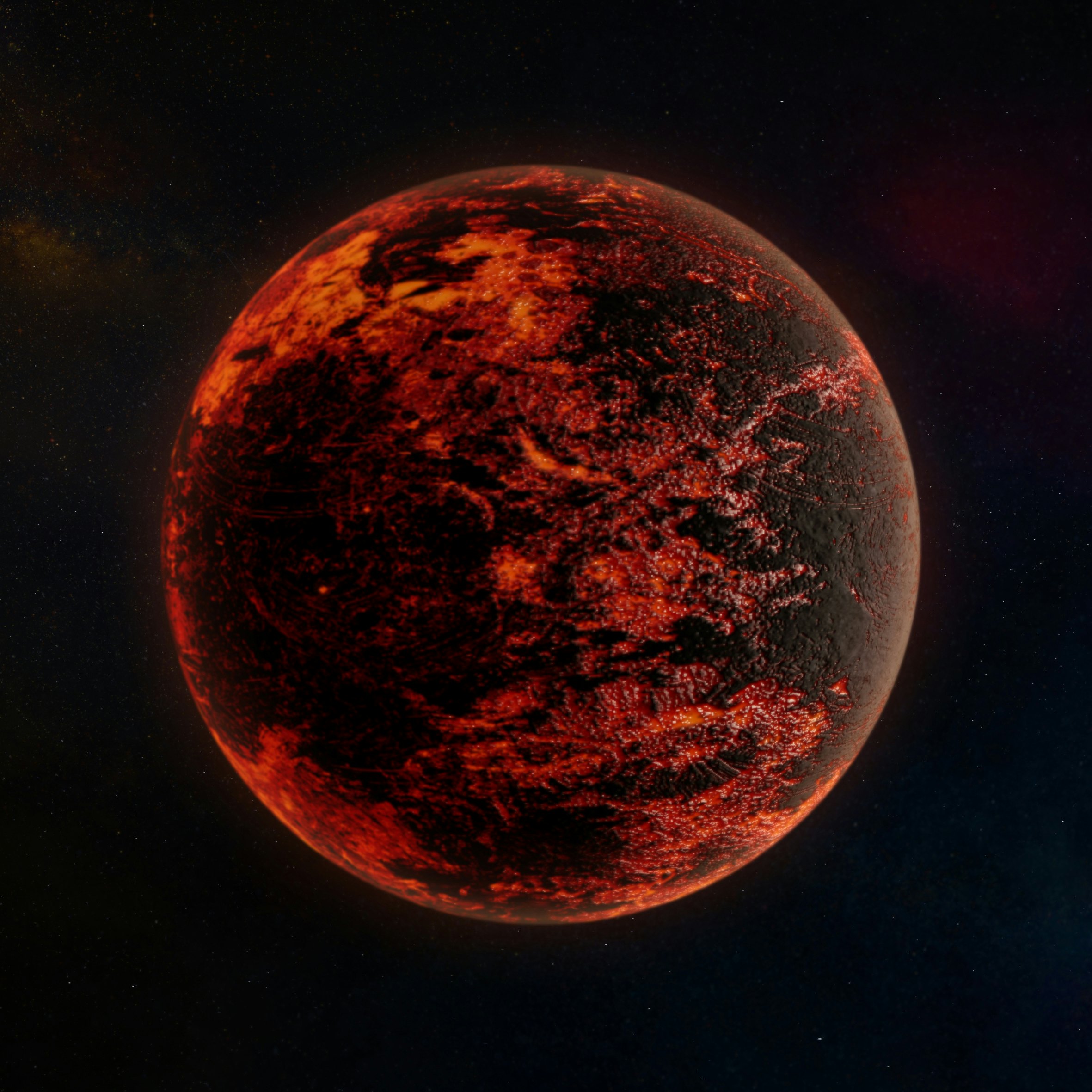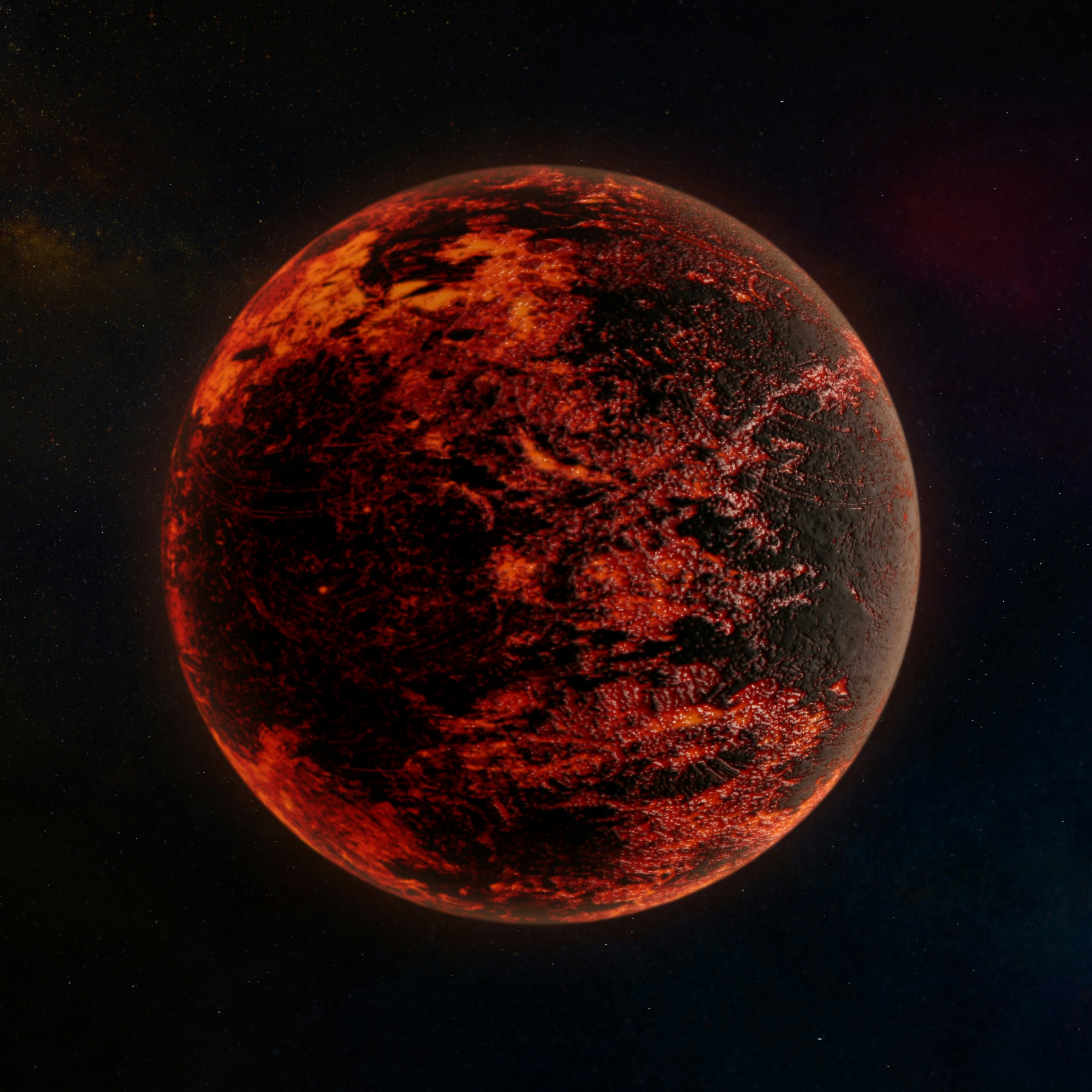
Weird lava worlds can shed light on our planet’s past, suggests a recent study.
When you think about a habitable planet, you probably don’t picture a fiery ocean of magma churning on the surface of an airless world. But this type of unusual planet may hold the key to understanding how Earth ended up with key ingredients for life. According to recent computer simulations, some lava worlds can trap volatile gases, including some of the chemicals necessary for life, deep in their mantles.
“When we’re talking about the evolution of a planet and its potential to have different elements that you would need to support life, being able to trap a lot of volatile elements within their mantles could have greater implications for habitability,” says Ohio State University planetary scientist Kiersten Boley in a recent statement. She and her colleagues published their work in a recent paper in The Astrophysical Journal.
Fiery, Fizzy Super-Earths
Boley and her colleagues used computer simulations to explore how “fizzy super-Earths,” planets covered in oceans of magma laced with volatile gases, evolve. They built digital models of lava worlds with different chemical makeups and a range of surface temperatures, then simulated what happened as those fiery planets slowly cooled down. And in at least one fairly common scenario, a slowly-cooling lava world could trap tremendous amounts of water and carbon — key chemicals for the building blocks of life — deep in its interior.

Lava worlds sound exotic, but they’re actually one of the most common types of planet we know about. Of the “rocky” planets (meaning the ones that aren’t mostly gas or mostly water) astronomers have discovered around other stars so far, about half of them aren’t actually solid rock; they’re covered with blazing oceans of molten rock. These hellish worlds are unlike anything in our Solar System (we really missed out on some of the most interesting planet types), but they’re not exactly rare.
Most of the lava worlds we know of will probably never be habitable because they’re much too close to their stars, which is a big part of why they’re magma worlds in the first place. But most rocky worlds go through a magma ocean stage at some point in their histories (Earth included), so studying them can help us understand something about how rocky planets form and evolve.
Stockpiles of Carbon and Water
One key thing that Boley and her colleagues’ simulations showed is that there’s more than one way for a lava world to cool and solidify, depending on what the magma is made of and whether the planet has an atmosphere to help insulate it. The magma ocean might start cooling from the top down, with molten rock solidifying into a brittle crust on its surface but still roiling liquid in its depths. On the other hand, cooling could start from beneath, leaving a churning ocean of lava atop a bed of solid (but very hot) rock.
The third option is the weirdest but also has the most potential for eventually turning a magma ocean into a livable world. If the magma starts cooling somewhere in the middle, you end up with a surface magma ocean and a deep mantle of magma, with a layer of solid rock sandwiched in the middle. Volatile gases, those that easily evaporate like water and carbon, could bubble out of the magma ocean at the surface — hence Boley’s term “fizzy super-Earths” — and if the planet doesn’t have an atmosphere, those gases just get lost in space.
But beneath the layer of solid rock, some of those volatile elements stay trapped in molten rock deep in the planet’s interior as it slowly cools. Eventually, depending on the planet’s geology, some of those trapped gases could escape through cracks or pores in the rock and find their way to the surface. And we’re talking about a lot of volatile elements. Boley and her colleagues found that a world four times as massive as Earth could store more than 130 times Earth’s supply of water in its mantle, along with about 1,000 times Earth’s supply of carbon. That’s a lot of material for future life if the planet cools enough (but not too much).
“Lava planets are a long way from becoming habitable enough to support life, but it’s important to understand the processes that help these worlds get there,” says Ohio State University in a recent statement about Boley and her colleagues’ work.







